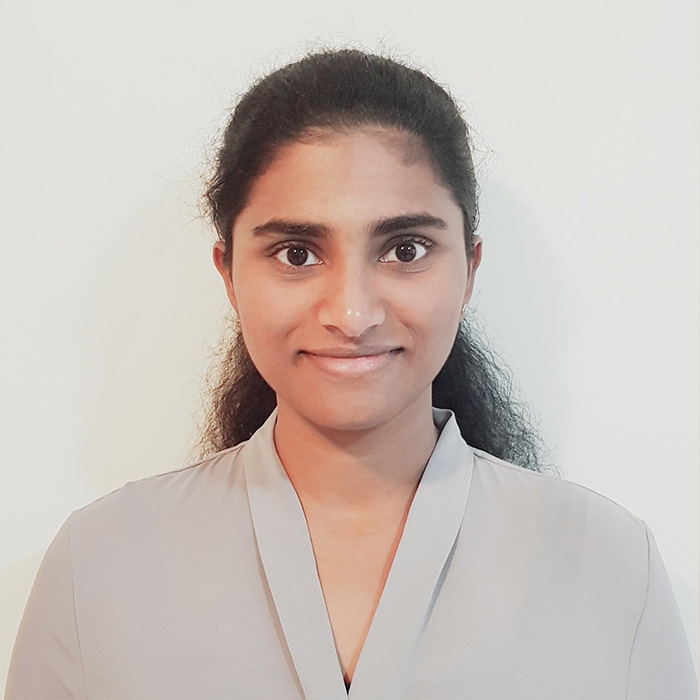
Dr Hansika Hewamalage
Postdoctoral Research Associate, School of Computer Science and Engineering
The University of New South Wales
I am currently a Postdoctoral Research Associate at the School of Computer Science & Engineering, UNSW, Australia. Before that, I worked as a Postdoctoral Research Fellow at the School of Computing Technologies, RMIT, Australia. In January 2022, I was conferred the PhD degree from the Department of Data Science & Artificial Intelligence, Faculty of IT, Monash University, Australia. My research interests are in the area of time series forecasting with applications in energy forecasting, sales forecasting and addressing related challenges. I work mostly in the cross section of Machine Learning methodologies and traditional time series forecasting practices and challenges, where I strive to bridge the gap between the two domains. I have made several significant research contributions in this respect, out of which I would like to highlight my paper titled ‘Recurrent Neural Networks for Time Series Forecasting: Current Status and Future Directions’ which is currently on the list of most highly cited publications at the International Journal of Forecasting. Apart from my professional background, I was born and raised in Sri Lanka and I moved to Melbourne, Australia in 2018 for my higher studies.
Advancing Time Series Forecasting Techniques and Practices in a Big Data Environment
Accurate time series forecasting influences many domains such as transportation, tourism, healthcare, and energy. Forecasting aids the decision process by assisting in terms of optimal resource allocation. For many decades, the task of forecasting has been restricted to predicting one available time series with the best possible accuracy. Thus, the state-of-the-art models for forecasting have mostly been traditional univariate models, such as the Exponential Smoothing State-Space (ETS) model and the Auto-Regressive Integrated Moving Average (ARIMA) model which build a single model per each series. However, in the current context of Big Data, the task of forecasting has shifted from predicting a few time series in isolation to predicting many possibly related time series. Massive amounts of time series are being collected every fraction of a second across numerous domains. This opens up the opportunity to build Global Forecasting Models (GFM) that simultaneously learn from many time series. Although, data-ravenous Machine Learning (ML) and Deep Learning (DL) models have mostly been characterised in the past as not being competitive for forecasting, with the recent trends towards Big Data, their potential is being extensively leveraged. This has most notably been shown in the M4 and M5 Forecasting Competitions which were both won by ML based GFMs. GFMs being an emerging research field, still have many possible directions for improvement. Moreover, the usual practices of forecast evaluation as measured per each series can be improved to be robust against pitfalls in a many series context. This thesis addresses several research gaps in this respect. 1) Recurrent Neural Networks (RNN) lack the support to be used by forecasting practitioners; 2) GFMs in general lack understanding around the different data and model characteristics that can affect their performance; 3) there is little knowledge established in the domain and especially among data scientists around the stability and reliability of different evaluation measures and practices used in a many series context. Aligning with these problems, as my first contribution, I present an extensive empirical study of existing RNN architectures for forecasting across a number of real-world datasets. In addition, to help with the academic translation to real-world applications, I develop guidelines and best practices around architecture choices and tuning of RNNs to fit a particular problem. All the implementations are integrated into an open-source software framework for forecasting. For the second contribution, I conduct a simulation study to investigate the time series properties such as homogeneity and heterogeneity of the series, complexity of the patterns in the data, availability of the data as well as the complexity of forecasting models that can affect the performance of GFMs in general. Thirdly, I propose a novel quantitative measure to explore the reliability of evaluation setups currently established and apply it on the M5 Forecasting Competition results as a case study. As my fourth contribution, I introduce formalised best-practices guidelines for forecast evaluation under different characteristics of time series along with an emphasis around the common pitfalls of forecast evaluation from an ML perspective.